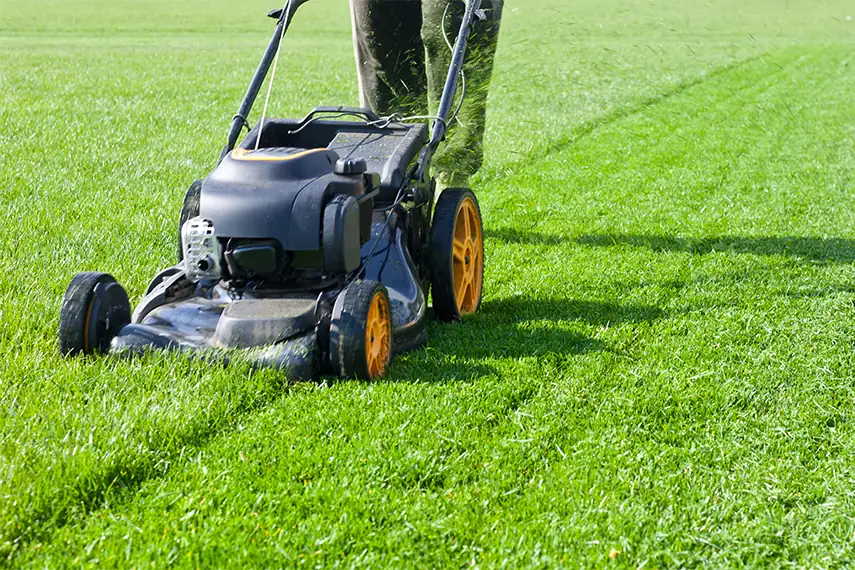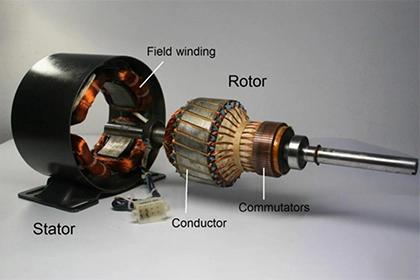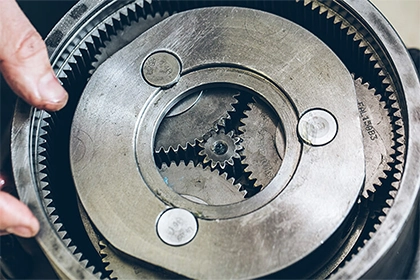
What is the difference between a linear and a servomotor?
A linear motor and a servo motor are two different types of motors that differ in their applications, characteristics, and operating principles.
In the spectrum of motion control and automation technology, motors play a pivotal role. Among the various types of motors available, linear motors and servomotors are two distinctive categories, each possessing unique characteristics and applications. This article aims to shed light on the differences between these two types of motors, their working principles, key features, and applications.
Understanding Linear Motors

Linear motors, as the name suggests, deliver motion in a straight line rather than rotational motion like most conventional motors. Essentially, a linear motor is an "unrolled" version of a conventional rotary motor, where instead of producing torque (rotational force), it produces linear force.
Working Principle
A linear motor typically operates on the same principles as a rotary motor, where force is generated through the interaction of magnetic fields. The stator and rotor are 'unrolled', so instead of producing a torque (rotation), they produce a linear force along the length of the motor.
Key Features
- The primary advantage of linear motors is their direct-drive capability. They can directly drive a load, eliminating the need for mechanical transmission elements like ball screws, rack and pinions, and belts and pulleys. This direct drive capability leads to higher accuracy, better dynamic response, and reduced maintenance.
Applications
Linear motors are commonly found in applications requiring fast, precise linear motion such as in semiconductor manufacturing equipment, high-speed assembly machines, and robotic systems.
Understanding Servomotors
A servomotor, on the other hand, is a closed-loop servomechanism that uses position feedback to control its rotational speed and position. They are typically used as a high-performance alternative to stepper motors or where complex, rapid movements are required.
Working Principle
A servo motor consists of a motor, a feedback device (such as an encoder), and a controller. The controller sends a signal to the motor, the motor moves, and the feedback device reports the movement back to the controller, creating a constant feedback loop. This allows the system to accurately control the motor's position, speed, and torque.
Key Features
- Servomotors are known for their exceptional speed, torque, and position control capabilities. They offer high acceleration, high peak torque, and the ability to resist changes in load. These motors can quickly accelerate loads and are capable of maintaining constant speed, even as the load varies.
Applications
Servomotors are used in applications where precise control of the motor's position, speed, or torque is required. This includes robotics, CNC machinery, automated manufacturing systems, and various other high-speed, precision applications.
Key Differences Between Linear and Servomotors
Now that we've looked at what linear motors and servomotors are, let's delve into their key differences.
Mechanism of Action
- Linear Motors: They produce linear motion directly without any need for mechanical conversion systems.
- Servomotors: They generate rotational or linear motion, but the emphasis is on the controlled movement provided by the feedback loop, which may require mechanical systems for conversion in case of linear motion.
Feedback and Control
- Linear Motors: While feedback systems can be integrated into linear motor systems, they inherently operate without a feedback loop.
- Servomotors: Servomotors inherently function with a feedback mechanism, allowing for precise control of position, speed, and acceleration.
Precision and Speed
- Linear Motors: They excel in applications requiring high speed and moderate to high precision in linear movement.
- Servomotors: They are known for high precision in positioning and speed control, with the added flexibility to be used in both rotational and linear applications when combined with mechanical elements.
Applications
- Linear Motors: Best suited for speedy linear motion and applications where space and mechanical complexity reduction is desired.
- Servomotors: Ideal for a wide range of applications requiring precise control over movement, whether rotational or linear.
Conclusion
In conclusion, while both linear motors and servomotors play vital roles in modern automation, they are fundamentally different in their working principles, characteristics, and applications. Understanding these differences is key to selecting the right motor for your specific application. Remember, the choice between a linear motor and a servomotor depends largely on your application's requirements.



Leave a Comment